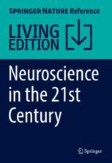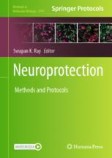Search
Search Results
-
Specifying Neuronal Cell Identities in the Central Nervous System: A Complex Tale of Proneural Gene Regulation
The brain is characterized by an astounding diversity of neuronal phenotypes. In the last few decades, great strides have been made toward...
-
The Regulatory Mechanism of Rab21 in Human Diseases
Rab proteins are important components of small GTPases and play crucial roles in regulating intracellular transportation and cargo delivery....

-
Amyloid Beta–Mediated Neurovascular Toxicity in Alzheimer’s Disease
The brain vascular system receives one-fifth of the total oxygen from the cardiac output, and this transport system is highly dependent on...
-
APP dyshomeostasis in the pathogenesis of Alzheimer’s disease: implications for current drug targets
The Amyloid precursor protein (APP) is a transmembrane glycoprotein from which amyloid-β (Aβ) peptides are generated after proteolytic cleavage. Aβ...

-
Protein Structure Prediction for Disease-Related Insertions/Deletions in Presenilin 1 Gene
More than 450 mutations, some of which have unknown toxicity, have been reported in the presenilin 1 gene, which is the most common cause of...
-
Recent Progress in the Treatment Strategies for Alzheimer’s Disease
Alzheimer’s disease (AD) is a neurological ailment that affects older people and causes a steady decline in their cognitive function. The cognitive...
-
Regulation and signaling pathways in cancer stem cells: implications for targeted therapy for cancer
Cancer stem cells (CSCs), initially identified in leukemia in 1994, constitute a distinct subset of tumor cells characterized by surface markers such...

-
New insight into protein glycosylation in the development of Alzheimer’s disease
Alzheimer’s disease (AD) is a chronic neurodegenerative disease that seriously endangers the physical and mental health of patients, however, there...

-
Anti-angiogenic effects of aqueous extract from Agrostemma githago L. seed in human umbilical vein endothelial cells via regulating Notch/VEGF, MMP2/9, ANG2, and VEGFR2
Abnormal angiogenesis contributes to the pathogenesis of various diseases. The medicinal usage of Agrostemma githago L. seed ( A. githago herein) has...

-
Euonymus hamiltonianus Extract Improves Amnesia in APPswe/Tau Transgenic and Scopolamine-Induced Dementia Models
Dementia is a syndrome exhibiting progressive impairments on cognition and behavior beyond the normal course of aging, and Alzheimer’s disease (AD)...

-
Application of CRISPR/Cas9 System in the Treatment of Alzheimer’s Disease and Neurodegenerative Diseases
Alzheimer’s, Parkinson’s, and Huntington’s are some of the most common neurological disorders, which affect millions of people worldwide. Although...

-
Methylation differences in Alzheimer’s disease neuropathologic change in the aged human brain
Alzheimer’s disease (AD) is the most common cause of dementia with advancing age as its strongest risk factor. AD neuropathologic change (ADNC) is...

-
Therapeutic Targeting of Antineoplastic Drugs in Alzheimer’s Disease: Discovered in Repurposed Agents
The heterogeneity and complexity of various pathological marker and few therapeutics options make Alzheimer’s disease (AD) a prime perpetrator to...
-
Computational Modeling of MAO Inhibitors as Anti-Alzheimer Agents
The incidence of neuropsychiatric diseases like Alzheimer’s disease (AD), depression, Parkinson’s disease (PD), etc. has increased rapidly, imposing...
-
Susceptibility to cellular stress in PS1 mutant N2a cells is associated with mitochondrial defects and altered calcium homeostasis
Presenilin 1 (PS1) mutations are the most common cause of familial Alzheimer’s disease (FAD). PS1 also plays a role in cellular processes such as...

-
Circulating mature dendritic cells homing to the thymus promote thymic epithelial cells involution via the Jagged1/Notch3 axis
Multiple proinflammatory conditions, including chemotherapy, radiotherapy, transplant rejection, and microbial infections, have been identified to...

-
Non-canonical non-genomic morphogen signaling in anucleate platelets: a critical determinant of prothrombotic function in circulation
Circulating platelets derived from bone marrow megakaryocytes play a central role in thrombosis and hemostasis. Despite being anucleate, platelets...

-
Effects of Fish Oil Combined with Selenium and Zinc on Learning and Memory Impairment in Aging Mice and Amyloid Precursor Protein Processing
Alzheimer’s disease is characterized by the aggregation of amyloid-beta (Aβ) peptide into plaques and neurofibrillary tangles. Aβ peptide is...

-
Akt signaling pathway: a potential therapy for Alzheimer’s disease through glycogen synthase kinase 3 beta inhibition
Alzheimer’s disease (AD) is a form of dementia marked by the accumulation of neuritic plaques and neurofibrillary tangles through the action of...

-
Phytoactive drugs used in the treatment of Alzheimer’s disease and dementia
The prevalence of Alzheimer’s disease and other forms of dementia is increasing worldwide, and finding effective treatments for these conditions is a...

